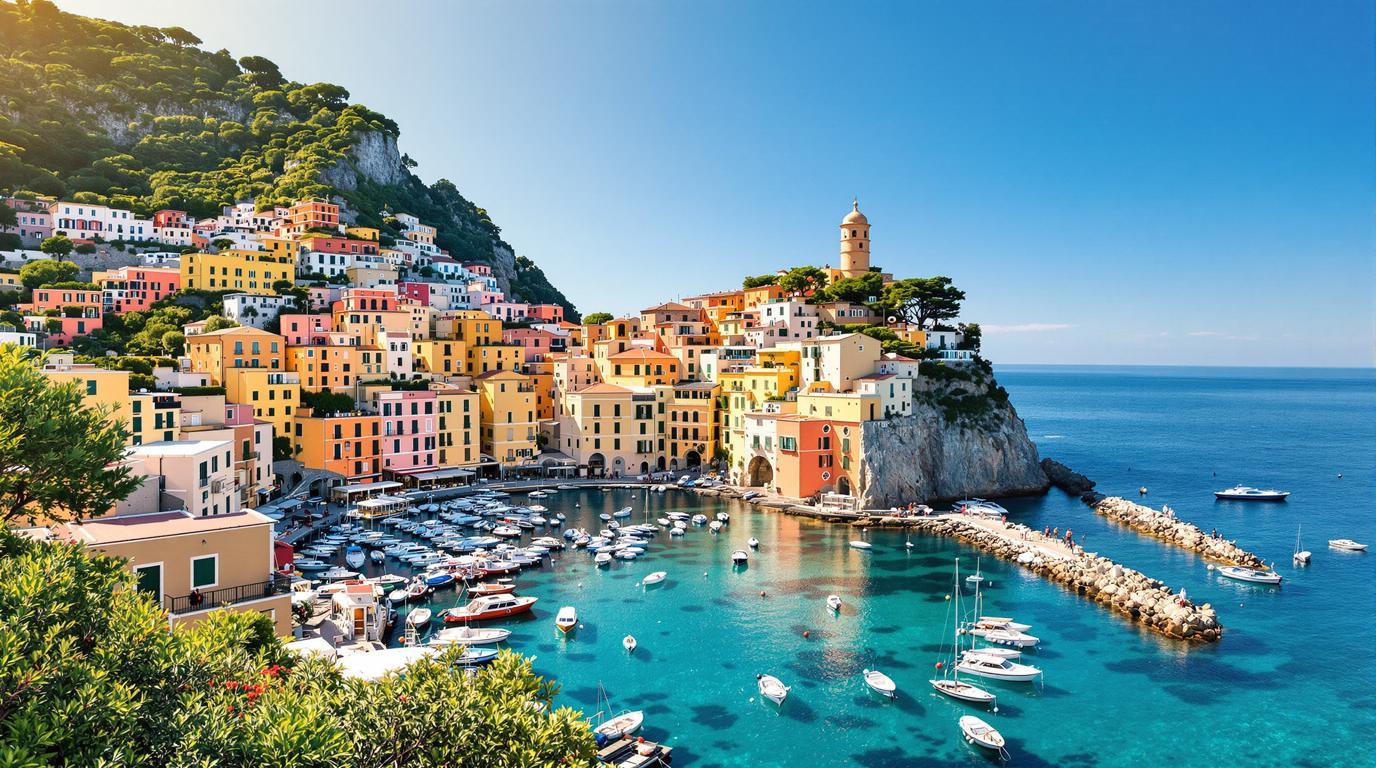The Italian island of San Pietro hides one of Sardinia’s best-kept secrets just a 40-minute ferry ride from the mainland. With crystal-clear waters rivaling the Caribbean and a cultural fusion unlike anywhere else in Italy, this hidden Mediterranean paradise offers a refreshing escape from Sardinia’s more trafficked destinations.
A cultural melting pot frozen in time
What makes San Pietro truly unique is its surprising cultural heritage. The main town of Carloforte was settled by Ligurian fishermen from Genoa in the 18th century who had previously lived in Tabarka, Tunisia. Today, locals still speak Tabarchino, a Ligurian dialect that sounds nothing like Italian or Sardinian.
“Our island exists between worlds – not quite Sardinian, not fully Ligurian, with whispers of North Africa in our traditions,” explains Maria Piras, whose family has lived on the island for generations. “It’s what makes us special.”
The most spectacular coastline you’ve never heard of
San Pietro’s dramatic coastline features rugged cliffs dropping into impossibly blue waters. At Capo Sandalo, Italy’s westernmost lighthouse stands guard over breathtaking sunset views that rival Scotland’s famed stargazing beaches. The secluded coves of Cala Vinagra and Cala Fico offer pristine swimming spots accessible only by boat or hiking trails.
A seafood lover’s paradise with a unique culinary identity
San Pietro’s cuisine reflects its distinctive cultural blend. The island’s signature dish is cascà, a couscous variation with North African roots but prepared with a distinctly Ligurian twist. The annual Girotonno festival celebrates the island’s historic tuna fishing tradition with competitions among international chefs.
At Da Nicolo restaurant in Carloforte, traditional recipes showcase the island’s culinary heritage. Their tuna lasagna with pesto beautifully represents the island’s Ligurian-Sardinian fusion.
The flamingo spectacle few travelers witness
While some islands boast electric blue beaches and flamingos, San Pietro offers its own spectacular wildlife viewing. The saltpans near Carloforte host flocks of pink flamingos feeding in shallow waters against a backdrop of windmills and ancient salt harvesting infrastructure – a photographer’s dream at sunset.
A living history of exile and reinvention
Unlike Napoleon’s famed exile island, San Pietro’s history tells a different story of voluntary migration and cultural preservation. The colorful buildings of Carloforte, painted in vibrant Mediterranean hues, feature distinctive architectural elements that reveal their Ligurian origins.
“Every stone in Carloforte tells a story of resilience,” says local historian Antonio Granara. “Our ancestors crossed seas twice to build this community.”
When to visit for the perfect experience
June offers the perfect blend of warm weather without summer crowds. The Girotonno festival (typically late May/early June) transforms Carloforte into a gastronomic wonderland. September provides warm seas and golden light that photographers chase but without the August crowds.
Where to stay for an authentic experience
Unlike climate-controlled dome accommodations, San Pietro’s charm lies in its authentic guesthouses. Ca’ du Becca in Carloforte offers renovated fishermen’s homes with harbor views, while Tacca Bianca provides stylish apartments in the historic center.
The beaches with an unexpected quality
While they don’t squeak like Tasmania’s famous white shores, San Pietro’s beaches have their own magic. La Bobba beach features distinctive white rocks contoured by wind into natural loungers. La Caletta’s turquoise waters are so clear that boats appear to float on air.
San Pietro isn’t just a destination; it’s an experience that captures something increasingly rare in Mediterranean travel – authenticity untouched by mass tourism. This cultural island within an island offers travelers a chance to discover Sardinia’s extraordinary beauty through a unique cultural lens that exists nowhere else on earth.
